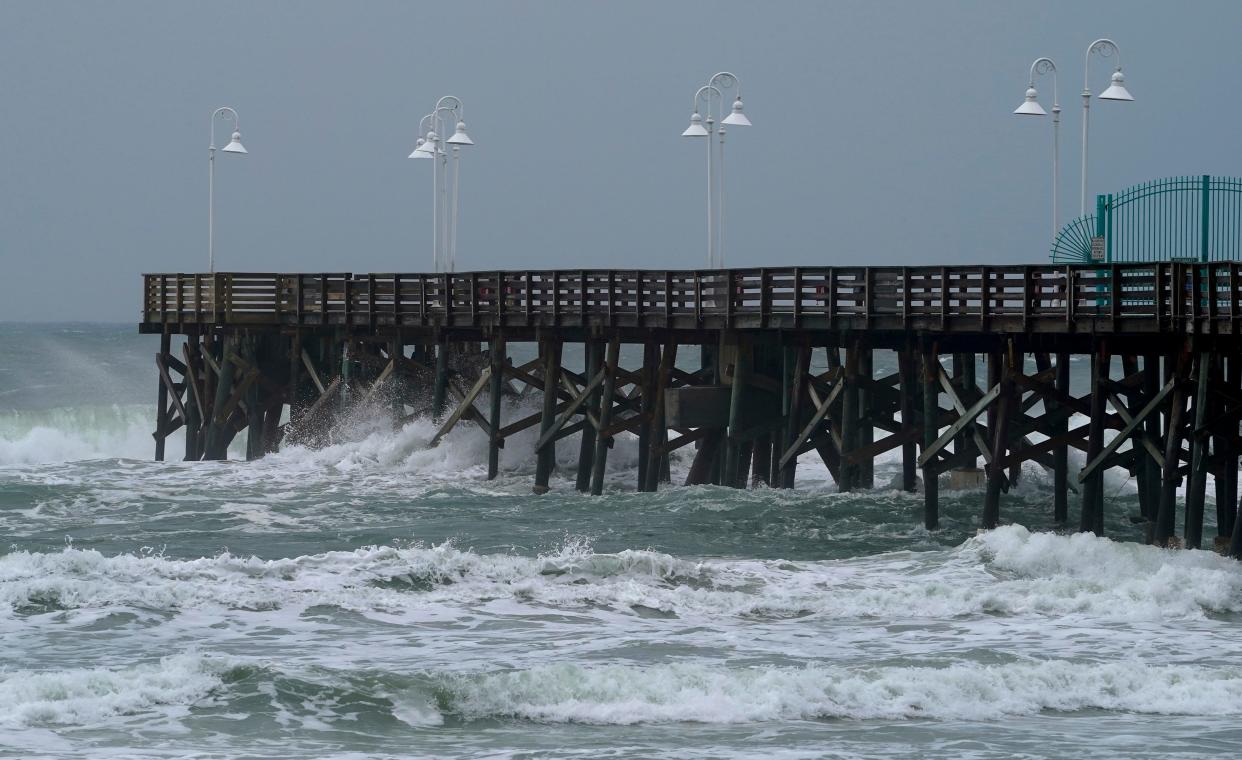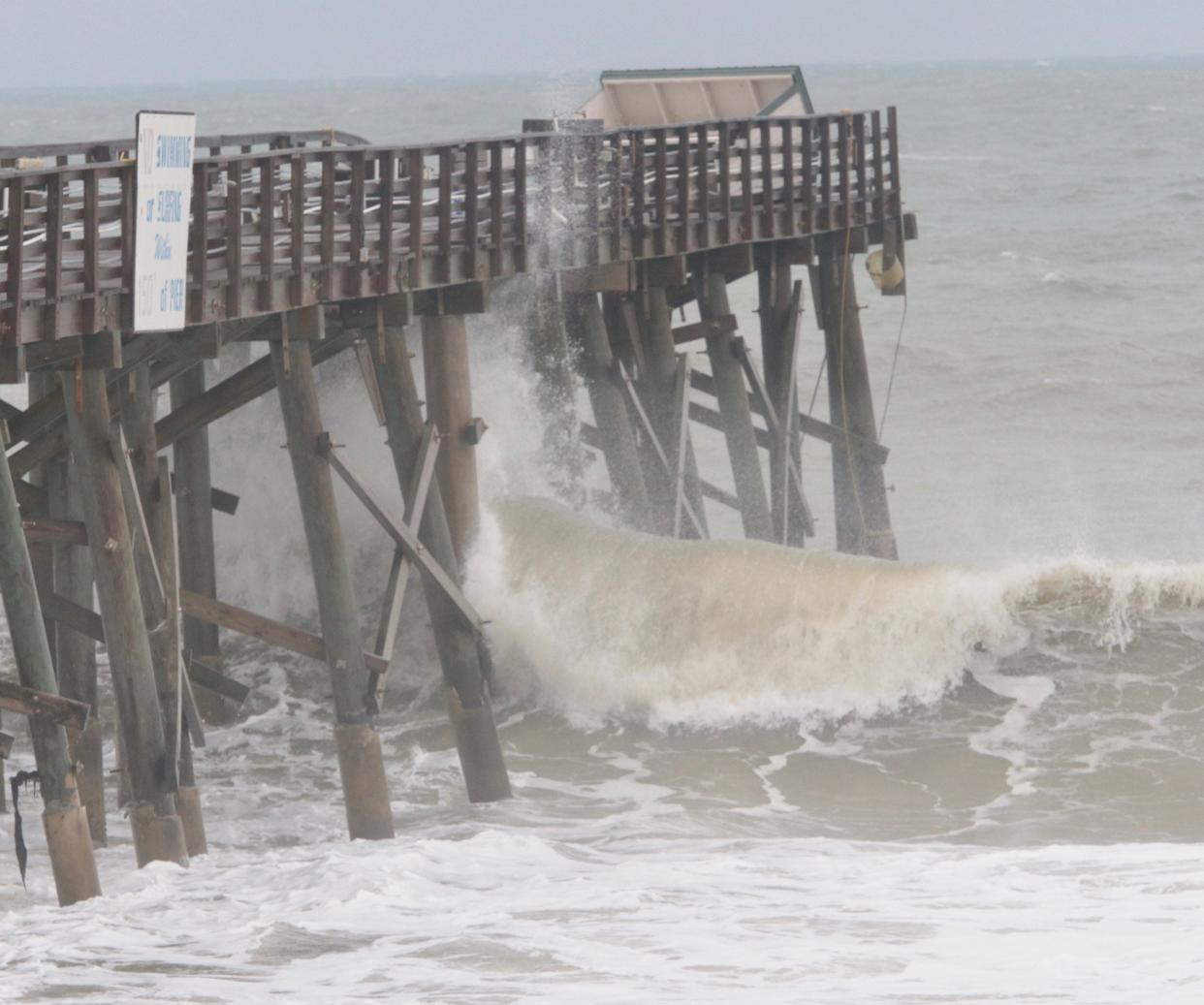Hurricane glossary: A definition of terms as peak hurricane season unfolds
In the wake of Hurricane Idalia's assault on Florida's Gulf Coast, this week all eyes are watching Hurricane Lee, a powerful storm expected to reach Category 5 strength as it heads north in the Atlantic off the East Coast.
It's the peak period in the Atlantic hurricane season, which runs through Nov. 30. To better keep track of storms, here's a refresher in the terminology used to forecast them by the National Hurricane Center.

Advisory
This is official information issued by tropical cyclone warning centers describing all tropical cyclone watches and warnings in effect along with details concerning tropical cyclone locations, intensity and movement, and precautions that should be taken. Advisories are also issued to describe: (a) tropical cyclones prior to issuance of watches and warnings and (b) subtropical cyclones.
Cyclone
An atmospheric closed circulation rotating counter-clockwise in the Northern Hemisphere and clockwise in the Southern Hemisphere.
Eye
The roughly circular area of comparatively light winds that encompasses the center of a severe tropical cyclone. The eye is either completely or partially surrounded by the eyewall cloud. That's an organized band or ring of cumulonimbus clouds that surround the eye, or light-wind center of a tropical cyclone.
Hurricane / Typhoon
A tropical cyclone in which the maximum sustained surface wind is 74 mph or more. The term hurricane is used for Northern Hemisphere tropical cyclones east of the International Dateline to the Greenwich Meridian. The term typhoon is used for Pacific tropical cyclones north of the Equator, west of the International Dateline.
Hurricane Local Statement
A public release prepared by local National Weather Service offices in or near a threatened area giving specific details for its county/parish warning area on weather conditions, evacuation decisions made by local officials and other precautions to protect life and property.
Be ready for a storm: 2023 hurricane season preparation: What supplies do you need for a storm? Here's a list
Hurricane Season
The hurricane season in the Atlantic, Caribbean, and Gulf of Mexico runs from June 1 to November 30. The hurricane season in the Eastern Pacific basin runs from May 15 to November 30. The hurricane season in the Central Pacific basin runs from June 1 to November 30.
Hurricane Warning
An announcement that sustained winds of 74 mph or higher are expected somewhere within the specified area in association with a tropical, subtropical, or post-tropical cyclone. The warning is issued 36 hours in advance of the anticipated onset of tropical-storm-force winds.
Hurricane Watch
An announcement that sustained winds of 74 mph or higher are possible within the specified area in association with a tropical, subtropical, or post-tropical cyclone. The hurricane watch is issued 48 hours in advance of the anticipated onset of tropical storm force winds.

Invest
A weather system for which a tropical cyclone forecast center is interested in collecting specialized data sets (e.g., microwave imagery) and/or running model guidance. The designation of a system as an invest does not correspond to any particular likelihood of development of the system into a tropical cyclone.
Landfall
The intersection of the surface center of a tropical cyclone with a coastline. Because the strongest winds in a tropical cyclone are not located precisely at the center, it is possible for a cyclone's strongest winds to be experienced over land even if landfall does not occur. Similarly, it is possible for a tropical cyclone to make landfall and have its strongest winds remain over the water.
Major Hurricane
A hurricane that is classified as Category 3 or higher.
Saffir-Simpson Hurricane Wind Scale
The Saffir-Simpson Hurricane Wind Scale is a 1 to 5 categorization based on the hurricane's intensity at the indicated time. The scale provides examples of the type of damage and impacts in the United States associated with winds of the indicated intensity. The following table shows the scale broken down by winds:
Category | Wind Speed (mph) | Damage |
1 | 74 - 95 | Very dangerous winds will produce some damage |
2 | 96 - 110 | Extremely dangerous winds will cause extensive damage |
3 | 111 - 129 | Devastating damage will occur |
4 | 130 - 156 | Catastrophic damage will occur |
5 | > 156 | Catastrophic damage will occur |
A detailed description of the Saffir-Simpson Hurricane Wind Scale is available at http://www.nhc.noaa.gov/aboutsshws.php.
Storm Surge
An abnormal rise in sea level accompanying a hurricane or other intense storm, and whose height is the difference between the observed level of the sea surface and the level that would have occurred in the absence of the cyclone. Storm surge is usually estimated by subtracting the normal or astronomic high tide from the observed storm tide.
Storm Surge Warning
The danger of life-threatening inundation from rising water moving inland from the shoreline somewhere within the specified area, generally within 36 hours, in association with an ongoing or potential tropical cyclones, a subtropical cyclone or a post-tropical cyclone.
Storm Surge Watch
The possibility of life-threatening inundation from rising water moving inland from the shoreline somewhere within the specified area, generally within 48 hours, in association with an ongoing or potential tropical cyclones, a subtropical cyclone or a post-tropical cyclone.
Tropical Depression
A tropical cyclone in which the maximum sustained surface wind speed is 38 mph or less.
Tropical Disturbance
A discrete tropical weather system of apparently organized convection originating in the tropics or subtropics, having a nonfrontal migratory character, and maintaining its identity for 24 hours or more.
Tropical Storm
A tropical cyclone in which the maximum sustained surface wind speed ranges from 39-73 mph.
Tropical Storm Warning
An announcement that sustained winds of 39-73 mph are expected somewhere within the specified area within 36 hours in association with a tropical, subtropical, or post-tropical cyclone.
Tropical Storm Watch
An announcement that sustained winds of 39-73 mph are possible within the specified area within 48 hours in association with a tropical, subtropical, or post-tropical cyclone.
This article originally appeared on The Daytona Beach News-Journal: A glossary of hurricane terminology during the season's peak


